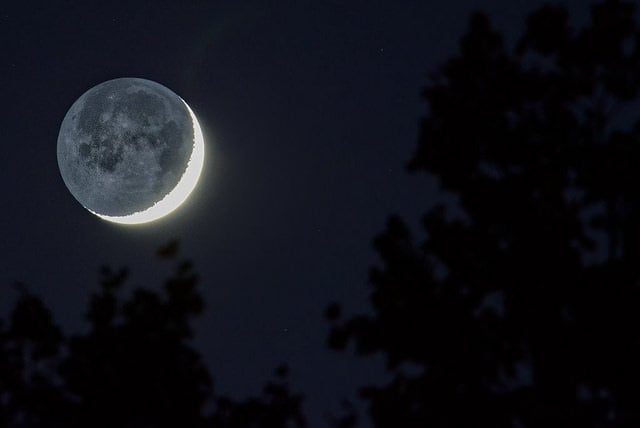Did you hear the one about last month's 'supermoon?'
Yeah, we know. The hype was actually for an event that was less than spectacular, as it revolved around the first New Moon of 2015 on January 20
th
. Said suspect Moon was touted as 'super' (we prefer the quixotic term
proxigean
) as it occurred 18 hours prior to perigee.
Not that the first
lunar perigee
of
2015
was an especially close one in time or space at 359,642 kilometres distant. Is every New and Full Moon now destined to become branded 'super' in the never ending SEO quest to get eyeballs on web pages?
But wait, there's more. We've noticed as of late that another popular term is creeping into the popular astronomical vernacular: that of a '
Black Moon
'.
[caption id="attachment_118891" align="alignnone" width="580"]
Black Moons for the next decade. Created by the author.[/caption]
We've written lots about Moons both of the
Black and Blue
variety before. We'll also let you in on a small secret: astronomers rarely sit around observatories discussing these Moons, be they Blue, Black or Super. At most, astronomers note the weeks surrounding New as the 'Dark of the Moon,' a prime time to go deep for faint objects while the light polluting Moon is safely out of the sky. And yes, terms such as 'Super' or 'Black Moon' have dubious roots in astrology, while the term Blue Moon comes down to us via a
curious mix-up
from Sky and Telescope and the Maine Farmer's Almanac.
Simply put, a
Black Moon
is the New Moon version of a Blue Moon, and is either:
- A month missing a Full or New Moon… this can only occur in February, as the lunar synodic period from like phase to phase is 29.5 days long. This last occurred in 2014 and will next occur in 2018.
- The second New Moon in a month with two. This can happen in any calendar month except February.
- And now for the most convoluted definition: the third New Moon in an astronomical season with four.
We bring this up because the February 18
th
New Moon is 'Black' in the sense that it meets the requirements expressed in rule 3. The fourth New Moon of the season falls on March 20
th
, just 13 hours before the
northward equinox
on the same date.
[caption id="attachment_118894" align="alignnone" width="580"]
An extremely thin crescent Moon against a low contrast twilight sky.
- Credit and copyright
-
David Blanchflower.[/caption]
Such are the curious vagaries of the juxtaposition of the lunar cycle on our modern day Gregorian calendar. Unfortunately, this doesn't mean you'll win the lottery or be lucky in love: any Earthly woes are strictly your own affairs to deal with, Black Moon or no.
It does mean, however, that higher than average ocean tidal variations are in the offing. The February 18
th
New Moon also occurs only seven hours and 42 minutes prior to perigee — the second closest time wise for the year for any Moon, Full or New —and just 115 kilometres shy of the closest perigee of 2015 on September 28
th
.
Lunar perigees can vary in distance
from 356,400 to 370,400 kilometres from the Earth.
[caption id="attachment_118893" align="alignnone" width="580"]
An extremely 'Old Moon' just 29 hours prior to New. Photo by author.[/caption]
Like the waxing and waning of the Moon, we too go back and forth about the surge in popularity of 'super-'and 'black and blue' moons. Sure, the pedigree of such terms is dubious at best. And it's also true that we all can't resist writing about 'em when we see those search numbers skyrocket. Still, if we fail to make the term our own, we've left the door wide open for woo to creep on in and claim the minds of our 'at risk' friends. Perhaps the best strategy is to 'hook 'em with Black moons,' then feed them science…
[caption id="attachment_118892" align="alignnone" width="580"]
Last year's partial solar eclipse. Photo by author.[/caption]
And you can indeed see a New Moon in a sense, during a
total solar eclipse
. The next chance to stand in the shadow of our nearest natural neighbor is coming right up
next month on March 20th
, although you'll have to venture to the high Arctic north of Europe to experience totality.
And it's always fun to try to spot the extremely thin crescent Moon within a day prior to or after New. You'll need an absolutely clear and flat horizon to accomplish this feat of visual athletics. Begin sweeping the suspect viewing area with binocs about 45 minutes prior to sunrise or after sunset. You'll be surprised how difficult it is to see the razor thin Moon against a low contrast sky. The challenge becomes significantly tougher when the Moon is within 20 hours of New.
[caption id="attachment_118890" align="alignnone" width="580"]
Optimal locales for the first sightings of the waxing crescent Moon for the remainder of 2015. Created by the author.[/caption]
Mike Weasner and Rob Sparks managed to
nab the Moon
with binoculars just 13 hours and 48 minutes past New in early January 2014, close to the record of 11 hours and 40 minutes.
Good hunting, and don't fear the Black Moon!
We originally posted this article a week ago, but today's the 18th, so we thought we'd run it again.
 Universe Today
Universe Today
